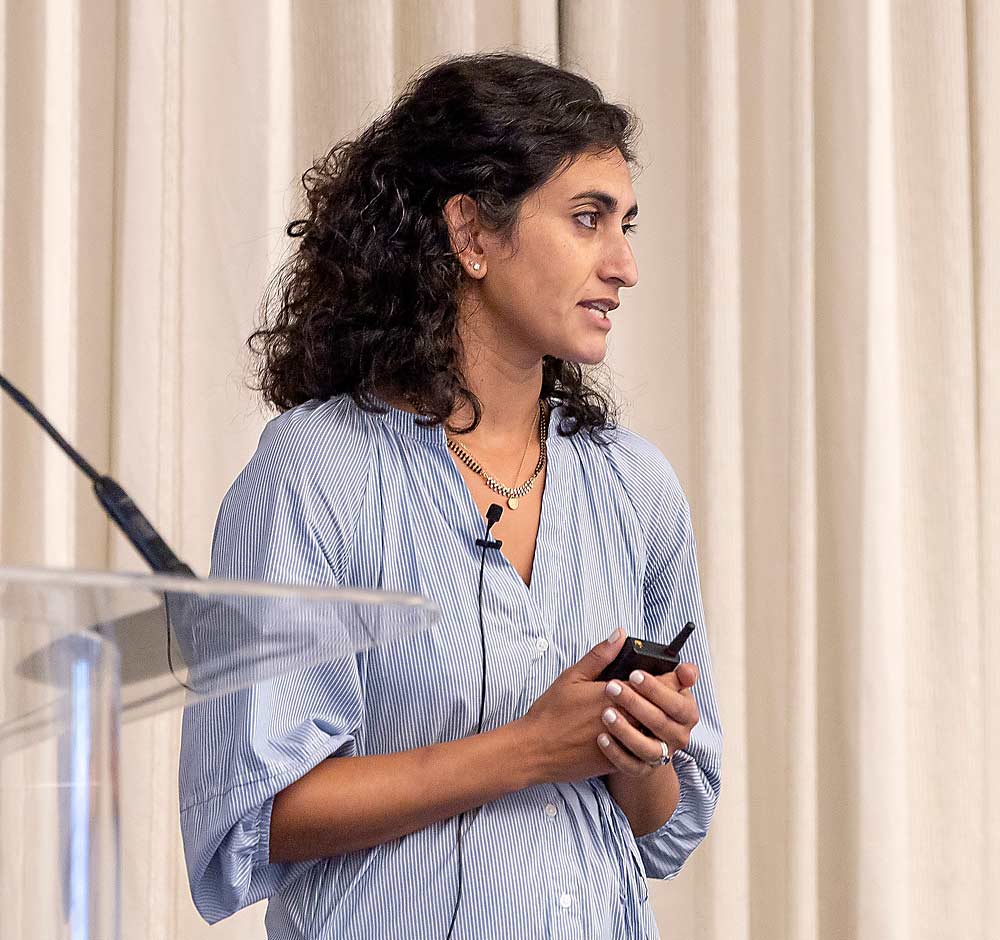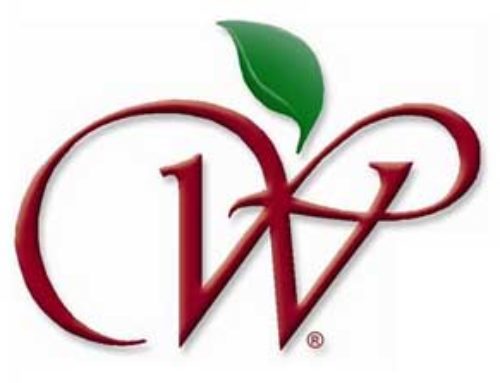—by Kate Prengaman

The U.S. Food and Drug Administration finally finalized its regulatory approach for how farms will be required to manage the food safety risk posed by preharvest water applications that contact fruit.
The compliance dates for the new rule, which is part of the Food Safety Modernization Act’s Produce Safety Rule, take effect for large farms this month and for small farms next year. The final rule replaced the initial approach that included water testing criteria with an annual risk assessment approach specific to each farm.
This change makes the regulation both more flexible and more complicated, according to experts who have been on the speaking circuit at industry meetings this past fall and winter.
“This assessment covers water that’s used for preharvest activities … including taking stock of the system, identifying the nature of that water source, and identifying how that water is conveyed,” said Kruti Ravaliya, consumer safety officer with the FDA’s Office of Produce Safety, when she spoke at the Great Lakes EXPO in Michigan in December.
For example: Is the canal that leads to your farm subject to runoff from a neighboring dairy after extreme rains? “Granted, you are not going to know everything that’s happening that may impact the water source, but having a better understanding of what that landscape looks like is what we are getting at here,” she said.
A risk can stem from neighboring land uses over which growers have no control. But once that water becomes under a grower’s control, the rule requires the grower to manage for those hazards, she said.
The risk assessment also needs to consider crop-specific factors, such as how the textured surface of a cantaloupe can harbor contaminants more than, say, a tomato, she said. Many studies have been done in different crop systems to help growers understand these risk factors, and growers will need to cite that specific scientific evidence to back up their production practices (see “Measuring risk mitigation”). Climate factors, such as rain frequency or ultraviolet light exposure, also merit consideration.
“You’ll notice that I didn’t describe any formal testing requirements, and that’s a sharp contrast from what we had identified and finalized in 2015,” she said. “Water quality testing is only one piece of this puzzle, and all of the other assessment characteristics, all of those pieces come together to help us understand what we are looking at with the landscape of water use.”
If the risk assessment detects any hazards, then the farm must implement mitigation measures or conduct water quality testing to support further management decisions, Ravaliya said. For example, if growers identify runoff following heavy rains as a hazard, they might want to use water quality testing to determine how long they need to wait after a storm event for water quality to settle back to a baseline.
Other mitigation measures include time intervals before harvest or storage intervals shown to allow for sufficient microbial die-off, changing sprinklers so water doesn’t contact the fruit, or repairs to the ag water system.
The FDA recently launched an online tool to walk farmers through the questions relevant in the assessment process, Ravaliya said. “We’ve heard a lot of feedback that it’s a lengthy process, but it’s very detailed and provides a lot of good examples,” she said. The tool can be found at: agwaterassessment.fda.gov.
For Northwest orchardists, “a risk-based assessment like this is very good news,” compared to other options that were considered, such as mandatory water treatment, said Kate Tynan, senior vice president for the Northwest Horticultural Council.
She didn’t want to minimize the “headache for growers to conduct this assessment,” she said, but tree fruit growers can point to evidence that shows how the current practices in place, as well as crop and climate conditions, combine to pose little risk.
“It’s a matter of growers trying to tell that story,” she said.
To help them, the NHC, the Washington State Tree Fruit Association, Washington State University and the Washington State Department of Agriculture came together for training in February to get on the same page. A training video and resources that Washington growers can use in their assessments are available on the association’s website: wstfa.org.
Similar proactive collaboration in other regions and between commodity groups would also help growers and regulators to be on the same page as enforcement of the new rule begins, said Don Stoeckel with the Produce Safety Alliance at the EXPO. The alliance is a collaborative effort between Cornell University, the U.S. Department of Agriculture and the FDA to provide training, education and outreach to the produce industry on food safety best practices.
The rollout of the new rule poses a challenge in that it can feel more subjective or open to interpretation for how growers or inspectors define terms such as “conditions that are likely to introduce a reasonably foreseeable hazard,” compared to water quality standards, he said.
“As an educator, it stresses me out, to be honest, because I want the grower to understand where some of the guardrails are,” he said. “We’re all just going to have to be gracious with each other in that first year or two or three as we work out what is reasonably necessary.”
That said, he applauded the new rule’s forward-looking approach.
“This is an incentivization to understand — ‘Where’s the poop? Is it getting into the water?’ — instead of saying, ‘Well, two years ago it didn’t get in the water, so I am probably good this year,’” he said. “It makes for a more thoughtful system.”







Leave A Comment